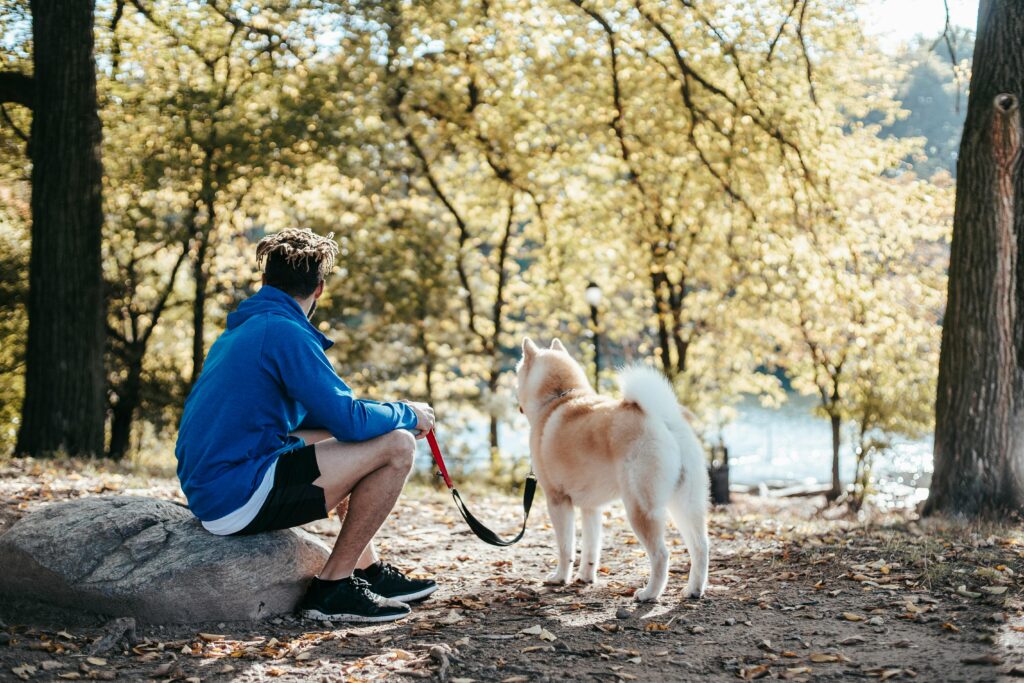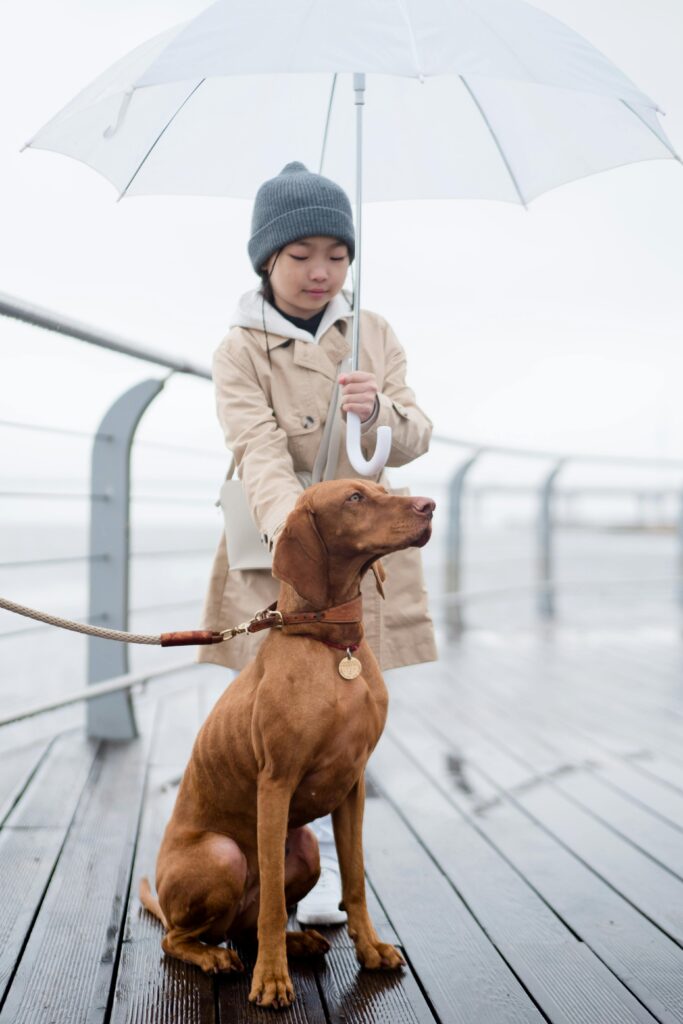Fall is around the corner, and that means more opportunities to get outside with your dog. Whether it’s hiking trails, strolling through festivals, or enjoying crisp morning walks, these experiences are far more enjoyable when your dog has mastered loose leash walking and stays calmly at your side.
If your walks currently feel like a battle of wills, you’re not alone. Many dog owners struggle with leash pulling. The great news is that with a few focused strategies, you can teach your dog loose leash walking so every autumn outing becomes relaxed, controlled, and fun.
Why Loose Leash Walking Matters
Loose leash walking isn’t just about manners. It’s a foundational skill that strengthens your relationship, builds focus, and improves safety in unpredictable environments.
Key benefits of loose leash walking:
- Prevents injury to your arms, shoulders, and back
- Reduces your dog’s reactivity by encouraging calm behavior
- Makes public outings and travel less stressful
- Builds trust and communication between you and your dog
No one wants to be the person being dragged down the sidewalk. A dog that walks politely turns heads for the right reasons.
What Loose Leash Walking Is Not
Before we dive into the “how,” let’s clarify what loose leash walking doesn’t mean.
- It is not a heel where your dog walks directly at your side with full attention
- It is not a free-for-all where your dog pulls in every direction
- It is not about dominance or correction-only methods
Loose leash walking means your dog can explore within the leash’s natural length without creating tension. They can sniff, observe, and enjoy the walk as long as they are not pulling.
Start Indoors or in a Low-Distraction Area
Dogs don’t learn well when they are overwhelmed. Begin your leash training in a calm environment like your living room, backyard, or garage.
Foundation steps:
- Clip the leash and reward your dog for staying near you
- Use food lures to encourage following and position
- Mark and reward each time the leash stays loose
- Change direction frequently to teach your dog to follow your lead
Once your dog can walk without pulling indoors, gradually introduce more challenging settings.
Use the Right Equipment
The tools you choose can make or break your training progress. Retractable leashes and no-pull harnesses that clip on the back often encourage more pulling.
Trainer-approved gear:
- A standard 4 to 6 foot leash
- A well-fitted flat collar or training collar used correctly
- A treat pouch for timely rewards
- High-value treats your dog doesn’t get every day
Still unsure which gear suits your dog best? This AKC guide on harness vs. collar offers a helpful breakdown.
Make It Fun and Rewarding
Dogs repeat behaviors that get rewarded. If walking calmly by your side leads to treats, praise, and sniff breaks, they’ll naturally do more of it.
Ways to keep your dog engaged:
- Use marker words like “yes” to clearly signal correct behavior
- Let your dog sniff or explore as a reward for good leash skills
- Mix in sits, turns, and tricks to keep the walk interesting
- Keep training sessions short and successful (10 to 15 minutes at first)
If your dog tunes you out the moment they step outside, our Basic Obedience Training focuses on building engagement and calm behavior around distractions.
What to Do When Your Dog Pulls
If your dog hits the end of the leash, stop moving. Don’t yank or scold. Just wait. The moment the leash slackens, mark and reward.
You can also:
- Turn and walk in the opposite direction
- Use a “let’s go” cue to reset
- Reward heavily when they return to your side
Consistency is key. If pulling gets them to the park faster, they’ll keep doing it. But if pulling makes the walk pause, they’ll quickly learn a better way.
Practice in Real-World Settings
Once your dog walks calmly in the neighborhood, begin adding higher levels of distraction like people, dogs, and outdoor cafés.
Start with:
- Quiet park trails during off-peak hours
- Walks near playgrounds or ball fields from a distance
- Pet-friendly stores like hardware or garden centers
Gradual exposure and obedience build confidence and real-world reliability. If your dog struggles to stay focused around outdoor distractions or gets overheated easily, our blog on how to keep your dog active when it’s too hot outside offers creative training ideas that also reinforce leash manners indoors and out.
Stay Patient and Consistent
Every dog learns at a different pace. You might have one great walk and one frustrating one right after. That is perfectly normal.
To stay on track:
- Train daily, even if only for 10 minutes
- Track your progress such as number of pulls or successful turns
- Celebrate small wins
- Avoid comparing your dog to others
With time, repetition, and structure, loose leash walking becomes second nature.
When to Call in Reinforcements
If your dog pulls like a freight train or lunges at distractions despite your efforts, professional help can make a big difference.
At Off Leash K9 Training in Erie, we specialize in helping dogs of all sizes and breeds master leash manners in real-world settings. Whether you are gearing up for a weekend hike or just want peaceful evening strolls, we can help you get there faster and with less frustration.
Let’s build those skills together. Start by reaching out through our contact page.



